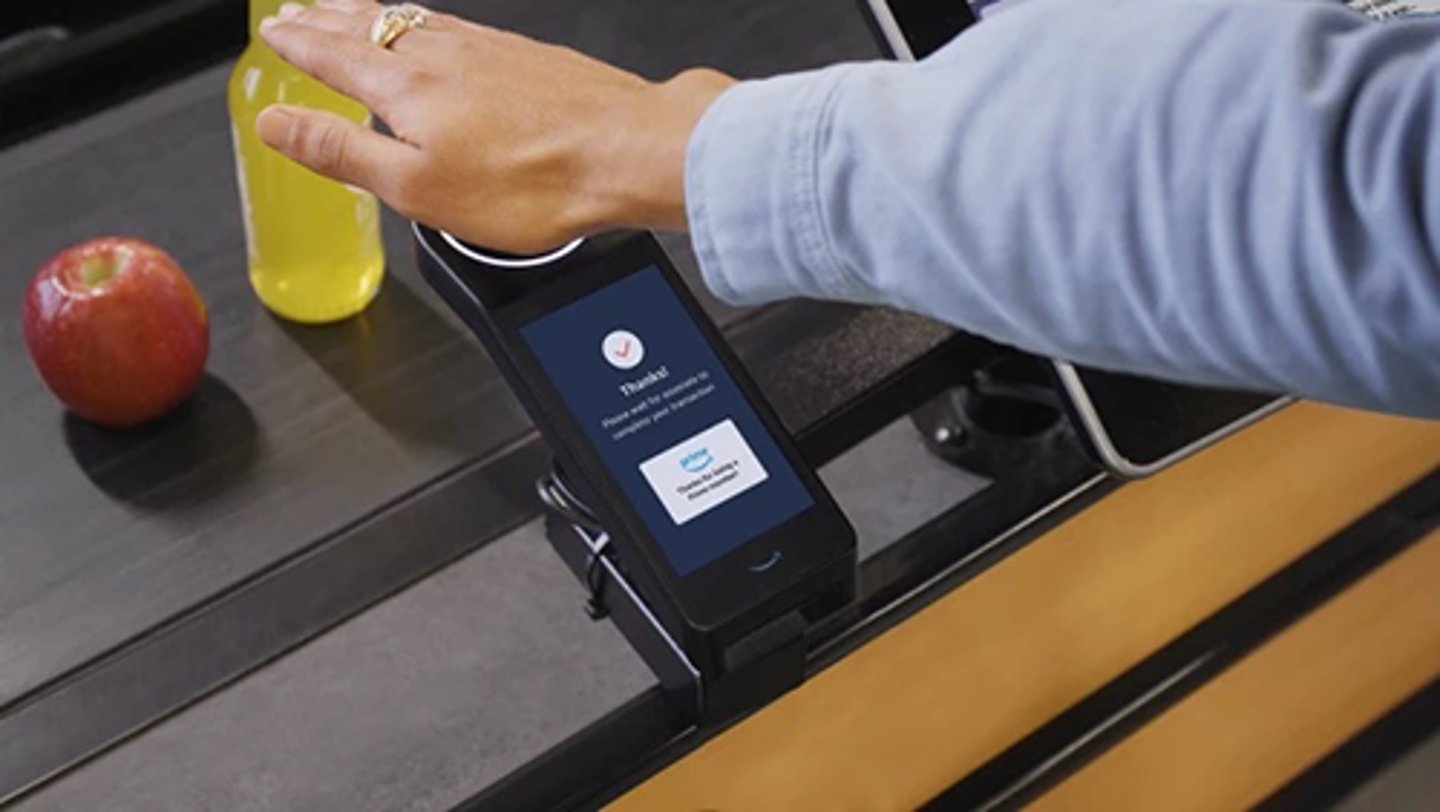Amazon’s palm payment method to be available at Whole Foods stores nationwide
Whole Foods Market is upping its commitment to palm payments. The Amazon-owned grocer has revealed that it will offer Amazon One at all of its more than 500 U.S. stores by the end of the year. This means that Whole Foods customers who choose to use Amazon One will no longer need their wallet or even a phone to pay — they can simply hover their palm over an Amazon One device to pay for their items.
“We are always looking for new ways to delight our customers and improve the shopping experience,” said Leandro Balbinot, chief technology officer at Whole Foods. “Since we’ve introduced Amazon One at Whole Foods Market stores over the past two years, we’ve seen that customers love the convenience it provides, and we’re excited to bring Amazon One to all of our customers across the U.S.”
[Read more: Amazon’s 2023 Prime Day to set sales record]
Amazon One is currently available at more than 200 Whole Foods locations across the United States. The technology will continue to be rolled out to the rest of the chain’s stores over the coming months.
First-time Amazon One users can pre-enroll online with their credit or debit card, Amazon account and mobile number, and the process takes about a minute. They can then complete the enrollment process in seconds by scanning their palm over an Amazon One device the next time they visit a participating Whole Foods store — or anywhere Amazon One is available. Once enrolled, Amazon Prime members will automatically see savings and other Prime member benefits applied to their Whole Foods store purchases. Alternatively, customers can also enroll in Amazon One in the store at an Amazon One device with their credit card and phone number.
In Demand
In addition to Amazon One’s availability at stores like Amazon Fresh stores and Whole Foods Market locations, third-party businesses are increasingly offering Amazon One as an identification and payment option for their customers — and some of them are also using Amazon One in new ways.
For example, the bakery-café chain Panera Bread recently launched Amazon One’s loyalty linking capability at select restaurants. With this feature, customers can simply hover their palm over the Amazon One device, and the Panera associate will be able to pull up their MyPanera loyalty account information, greet the customer by name and provide a customized experience. After the order is placed, the customer can scan their palm again to pay.
At Coors Field, home of the Colorado Rockies MLB team, Aramark Sports + Entertainment is taking advantage of Amazon One’s “age verification” capability. This feature allows adult customers aged 21 years old and and over to purchase alcoholic beverages by simply scanning their palm at an Amazon One device without looking for their government-issued IDs.
Amazon One can also be found in airport stores and several grocery and convenience stores.
The Technology
Amazon One uses multiple characteristics of a palm to identify each person who uses the service. When a customer holds their palm over the Amazon One device, the technology evaluates various aspects of the palm to identify that it’s that person. Cameras in the hardware capture surface-area details like lines and ridges, as well as subcutaneous features such as vein patterns. No two palms are alike, so the technology analyzes multiple attributes and selects the most distinct identifiers to create a customer’s unique palm signature.
While a person’s palm and vein patterns are permanent, the digital palm signature Amazon uses for identification is not. Unlike a credit card or password, a customer’s Amazon One palm signature can’t be replicated to impersonate them. This is because Amazon One doesn’t use raw palm images to identify a person. Instead, it looks at both palm and underlying vein structure to create a unique numerical vector representation — the palm signature — for identity matching.
[Read more: E-commerce sales continue to slow throughout 2023]
Customer palm data is safeguarded in the AWS Cloud. AWS is backed by more than 300 cloud security tools and 100,000 security partners from around the world. In addition, the company said that Amazon One is protected by multiple security controls and has tamper-detection capabilities that will render the device unusable if meddled with.
According to the company, Amazon One palm data isn’t used by Amazon for marketing purposes, and it won’t be bought by or sold to other companies for advertising, marketing or any other reason. When used at third-party locations, Amazon doesn’t track what customers do or buy after entering the location. The company said that data isn’t associated with a customer’s biometric identity.
The first certified-organic national grocer, Austin, Texas-based Whole Foods has more than 500 stores in the United States, Canada and the United Kingdom.
This story originally appeared on Progressive Grocer.

